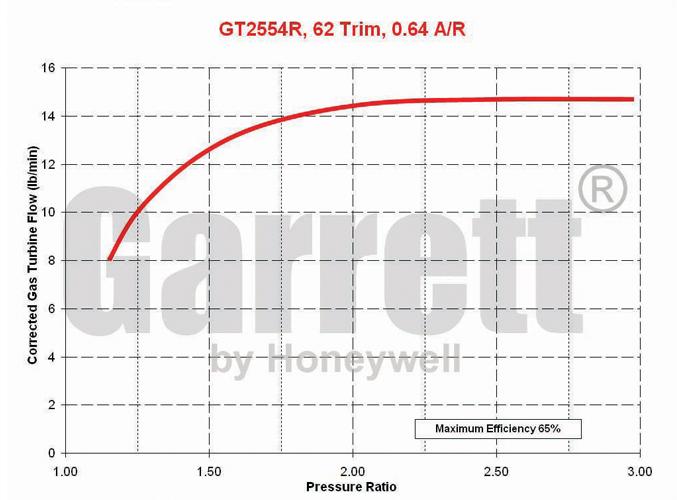What are you using for VE? You are showing higher boost for the same power as my calcs.
Just picking on the 3000rpm 130kw point, I'm only showing 13psi with 70% comp efficiency and 60% intercooler effectiveness.
Compressor efficiency looks reasonable at around 70% between 2000 and 3000 RPM.
The disco potato is a significantly bigger turbine. This one:
Has turbine measurements which match mine. My best guesstimates put my 0.49 housing as scaling the line down to about 13.3 lb/min corrected choke flow.
But yes the vane behaviour and equivalent A/R is the big ? Can it adjust either side of the housing A/R ratio equally or only much smaller and not much bigger? The turbine efficiency of the VNT's is also a lot lower (drag from all those vanes at a less than ideal angle).
This one is incredibly fuzzy, but it shows the limits of operation for an unknown VNT model:
There is an FSAE data dump on the web with GT1541V (#700960, application includes vw 1.2tdi allegedly) maps including turbine, the A/R is 0.42 if you want to compare against fixed geometry housings.
Turbine maps are corrected to STP. It's a mental battle doing the calcs for real flow to corrected as you have to juggle pressure at the inlet, expansion ratio and power or real flow to keep corrected flow on the target.
*edit*
I've just compared the GT1541V turbine map (0.42 A/R) against a GT1544 which appears to use the same 58 trim turbine with a 0.34 A/R housing.
It looks like the VNT maxes out at the stated A/R. VNT with 0.42 only hits ~7.5 lb/min corrected. Fixed with 0.35 A/R is ~6.3 lb/min corrected.
This does not bode well for your VNT25. It may choke and spike both boost and drive pressure to kill your top end performance.





 Reply With Quote
Reply With Quote




Bookmarks